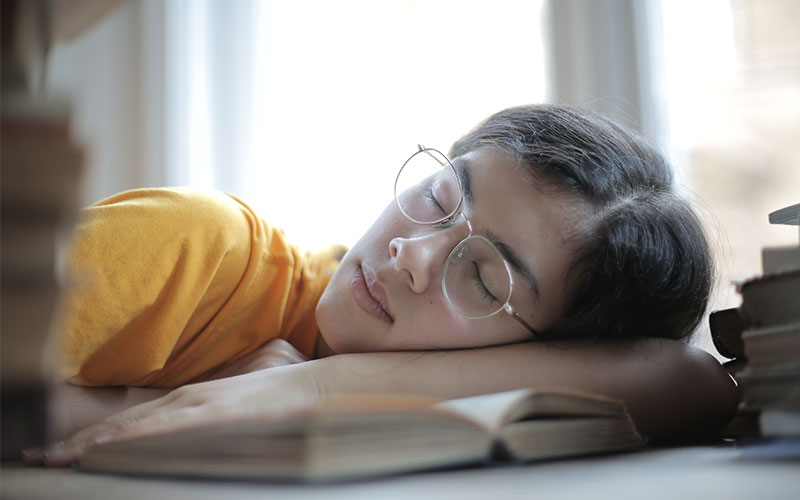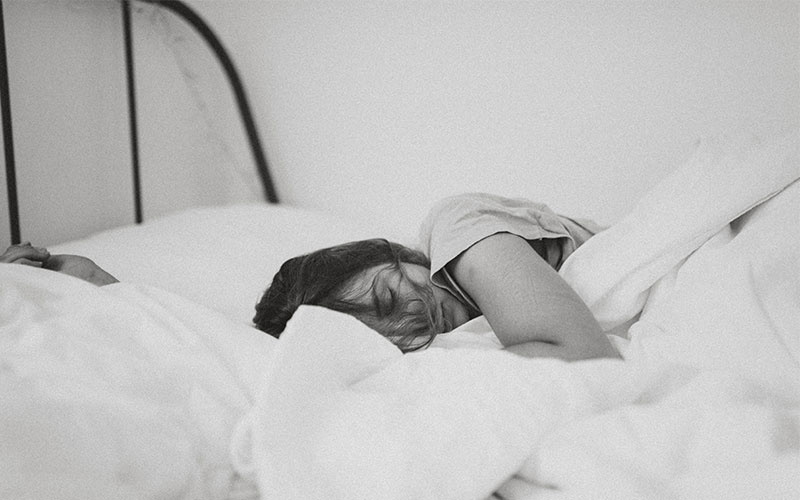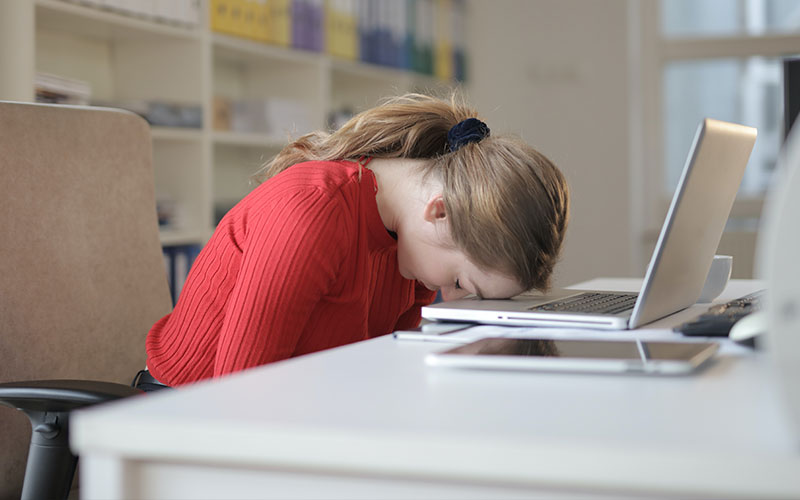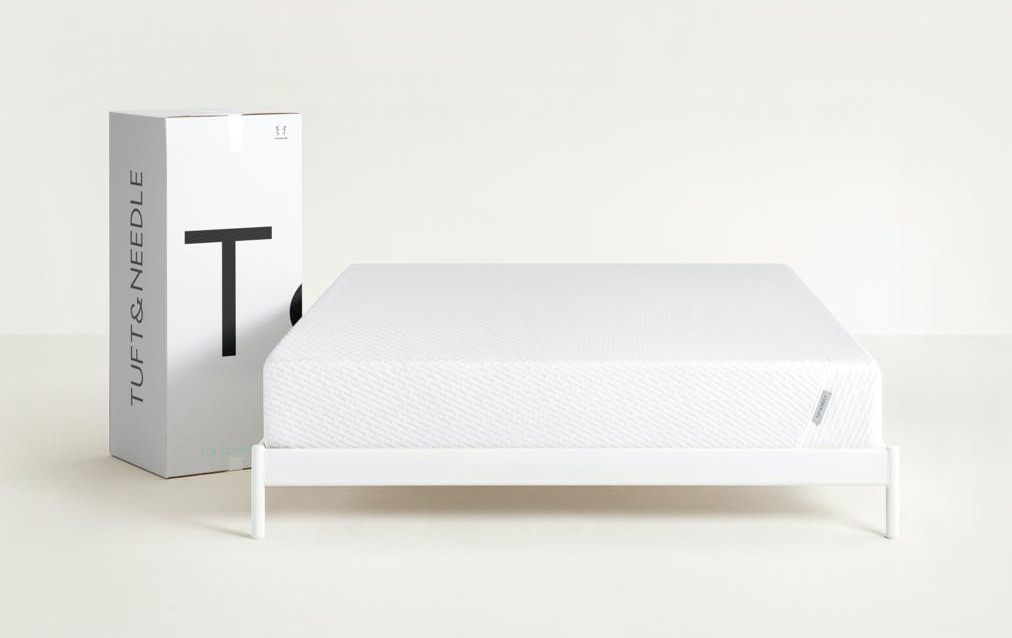
It may sound small, but microsleep can have a big impact on your waking moments. Know more about this strange occurrence and its ties to sleep deprivation, and what are the best ways to turn it around with sweet dreams instead.
We’ve all probably experienced this at some point in our lives – we wake up, feel grouchy, grab some coffee, still feel somewhat grouchier, and to top it off, a family member comes up and jokes, “Did you wake up on the wrong side of the bed today?”. While that surely sets people off more, there’s definitely no difference if you rolled off your bed from the left or right side. There is, however, a good possibility that some sort of sleep deprivation may have taken place the night before, thereby affecting your mood in the morning.
Sleep deprivation has many types, the more common among them are insomnia, sleep apnea, narcolepsy, restless legs syndrome, and REM sleep behavior disorder, wherein you act out your dreams while you sleep. There’s another type of sleep deprivation that occurs so commonly, but is not treated as drastically as the aforementioned five, perhaps due to it’s random and blink-of-an-eye kind of occurrence. And this is none other than the peculiar but prevalent sleep disorder known as Microsleep.
Why Your Body Needs A Good Night’s Rest
In terms of sleep, quality and quantity should go hand in hand. The value of sleep in maintaining one’s health and wellness cannot be understated. Think of the whole function of sleep as kind of like an assembly line in a factory. When the body goes dormant, the mind goes into full gear. Many restoration processes take place inside the body, like for instance:

- Your brain is able to sort out and store information from how your day went. This process enables the creation and storage of long-term memories.
- Your central nervous system releases somatotropin, the body’s growth hormone, which ignites the body’s ability to repair any tissue damages and incite growth.
- Your immune system releases cytokines, a type of small proteins that help fight inflammation, infection, and trauma in your body.
- Your sympathetic nervous system, that part of your brain nestled in the hypothalamus, gets to relax, allowing your fight or flight response functions to rejuvenate itself each night.
- Your adrenal glands release cortisol into the bloodstream. Cortisol is a steroid hormone that regulates metabolism and the body’s response system to stress.
That’s why 8 is an optimum number of hours for the body to take a deep slumber so it could give the brain ample time to regenerate and revitalize all these necessary physiological functions. But having enough time to sleep is not enough. The quality of sleep should also be considered. For what good would 8 hours of sleep be if you sporadically wake up every few hours or so during the whole cycle? If that were indeed an assembly line in a factory, it would be tantamount to incompleting certain processes.
According to the American Sleep Apnea Association, there’s about 50 million Americans who suffer various types of sleep disorders each year, alongside another 20 to 30 million Americans who are plagued by intermittent sleep problems. And due to this staggering statistic of sleepless people at night, it comes as no surprise that microsleep is an aftermath for a lot of them.
The Bizarre Phenomenon That Is Microsleep
In the animal kingdom, sleeping is a lot more evolutionized in some species than the rest. Fish are the first to come to mind when talking about animals that sleep with their eyes completely open. Among mammals, creatures like bottlenose dolphins, porpoises, sea lions, and manatees can sleep with one eye open. This is called unihemispheric sleep, an evolutionary feature that allows half of the animal’s brain to rest, while the other half is on alert mode, monitoring for any predators around.
Unfortunately for us humans, we haven’t evolved that far yet. Sleep is still a process that requires us to keep both eyes shut and our body immobile. People who suffer from microsleep, however, often describe the experience as falling asleep randomly or falling asleep while awake. So what is microsleep exactly?
Let’s decode it in the simplest, non-medical terms – Microsleep is an abrupt and involuntary episode of unconsciousness that lasts no longer than 30 seconds. It’s kind of like having a mental blackout. The power in your brain just suddenly shuts off, and an instant later, turns back on again. Medically speaking, when microsleep occurs, neural activities slow down and muscle tones drop. But because it happens so rapidly, it’s hardly ever felt by the person experiencing it.
Other than this uncontrollable, mental blackout, other symptoms of microsleep can also include a blank stare, sudden body jerk, unresponsiveness to stimuli, constant yawning, and excessive blinking to stay awake. These unpredictable episodes can just happen anytime, especially when you’re sleep deprived from several nights consecutively.

These bouts of micro naps might seem harmless on the outside, after all, it doesn’t last beyond 30 seconds, but the danger to them is that even if a person’s eyes are fully open when they occur, the brain is not processing any information at all. So this means that during a microsleep episode, a person is essentially blind as it happens. And the biggest risk to that is when the said person could either be driving, operating heavy machinery, carrying a baby, crossing the street, and pretty much just about any daily task.
And while microsleep might seem not as life-threatening as sleep apnea nor chronic insomnia, the biggest problem with microsleep is that majority of the time, it takes place during the day, when a person needs to be fully awake for work, chores, or other functions. That’s why the perfect combination of sleep quality and quantity should be attained because doing so reduces your risk of falling asleep randomly during the day.
What About For Those Who Work Nights and Graveyard Shifts?
For the majority of the population, sleep is centered around the normal cycle of daylight fading and darkness settling in. This is in keeping with following our circadian rhythms, which is our internal clock that monitors our body when it’s time to sleep and when it’s time to rest, within a 24-hour cycle. Naturally, circadian rhythms for humans is to feel physically tired at night and to feel physically energized in the day, with sleep coming in between these two physiological states as a regulator.
Millions of people, however, don’t have much of a choice in following the natural circadian rhythm for humans. A lot of these people are laborers who have graveyard shifts, like call center agents, hospital workers, on-call doctors, ground control operators at airport towers, and many more. Unusual circadian rhythms are also prevalent in pilots and flight attendants who cross international time zones on long haul flights.

Unfortunately for a lot of these people, many of them can go through a special sleep deprivation form called shift work disorder. Due to the irregular time in the day when these people can finally head to bed, shift work disorder is quite common for most of them, with microsleep an expected consequence. Ergo, the risk to commit grave errors and accidents at work can greatly ramp up even more for those who suffer shift work disorder compared to those who are able to tuck in bed during the night-time hours.
Classic Cases of Sleep-Deprivation Caused Catastrophes
A few of history’s worst man-made disasters all have this in common – the main person in charge fell asleep on the job. The Three Mile Island nuclear accident in Pennsylvania in 1979, the Chernobyl reactor meltdown in Ukraine in 1986, and the Exxon Valdez oil spill in Alaska in 1989, are some examples of horrifying workplace hazards that were brought about by sleep deprivation.
A more recent tragedy was that of Air France Flight 447 that departed from Rio de Janeiro headed to Paris on June 1, 2009. Mid-flight, the doomed aircraft plunged into the Atlantic Ocean, killing all 228 passengers and plane staff onboard. While originally assumed to be caused by automation problems and engine malfunction, it was discovered two years after, when the plane’s black box was retrieved from the bottom of the ocean, that the captain among the 3 pilots had taken a nap during the time the emergency occurred because he had only slept for one hour from the night before.
In 2013, a Metro-North rail engineer suffered a bout of microsleep while steering a passenger train on the North Hudson Line in New York City. Described to have “basically nodded” a split-second before the train’s derailment, it was too late for the rail engineer to hit the brakes before the train sped out of control, killing 4 passengers. Tragic events such as these could have been clearly avoided had these transport operators given themselves sufficient time to sleep, especially for their high-risk jobs that entailed carrying other people to safety across destinations.
No, Energy Drinks Won’t Solve The Problem
A big afterthought with a robust, global economy such as the one we have now is the emphasis on work performance – the faster you turn in more finished work, the better. This mindset has led to the popularity of energy drinks, those so-called mental and physical boosters that come in a can. These carbonated beverages are overloaded with caffeine alongside other energy-increasing ingredients, like several B vitamins and taurine. Today’s energy drinks market often boasts of sugar-free options, too.
While energy drinks like Red Bull, the most popular brand in the market, may indeed give a drinker an added jolt of energy, they can also cause harmful side-effects, especially if being consumed frequently and in large doses. Because of their boosting compounds, energy drinks can significantly increase one’s blood pressure and heart rate levels, even more than drinking just mere coffee alone.
A fatal case of the side-effects brought about by energy drinks is that of this Indonesian copywriter who slipped into a coma and died shortly after subsisting on Kratingdaeng, a local version of Red Bull, for days on end. But even more alarming than that was the fact that on the tragic day she fell into a coma, she hadn’t slept in the last 30 hours as she was just working all throughout that time.
Unfortunately, this extreme combination of energy drinks and sleep deprivation happens more commonly these days, especially among millennials who are pressured to work harder than what’s expected of them. And the first warning signs are usually brought about by consecutive episodes of micro naps, but these workaholics usually brush them off as just a small aftereffect of exhaustion.
Turn These Every Day Routines Into Good Health Habits
A surefire way to combat microsleep is to rest easy and sleep adequately for at least 7 to 8 hours per night. For those who might have difficulty sleeping soundly at night the moment you close your eyes, it’s easy to inculcate these daily routines to become healthy habits that can turn your sleep cycles into a restful and rejuvenating rhythm:
- Eat foods rich in sleep-inducing ingredients like melatonin, calcium, copper, zinc, antioxidants, and serotonin. The food sources for these can be found in almonds, warm milk, kiwi, walnuts, chamomile tea, fatty fish, tart cherries, and lettuce.
- Exercise moderately during the day time. Moving your body releases endorphins that can trigger a more cheerful disposition, causing you to feel perkier and more alert. The following workout routines are also great inducers for sleep – Aerobics, Strength Training, and Yoga.
- Refrain from using your smartphones and other electronic gadgets at least 30 minutes before going to bed. This ensures that your brain is given a pause from processing information and is getting readied to slow down.
- Train yourself to limit your coffee intake to at most 2 cups a day, and if you can help it, take that last cup at most 8 hours before going to bed. This is so that the caffeine’s effects wear out by the time you’re ready to wind down for the day.
- It’s highly advisable not to have a drink, not even a glass of wine, right before bedtime. Should you feel the need to drink, have it at least 2 to 4 hours before sleeping.
- Create a restful environment in your bedroom. Try to limit the sources of light and if plausible, keep your space cool, quiet, and dark.
- A nap in the daytime is fine, but the rule of thumb is never to nap for more than 30 minutes, and only nap once if you must.
Lastly, know when to contact your doctor. When microsleep occurs more frequently in your routine, immediately address the problem. It might be a symptom of a larger disorder like sleep apnea or narcolepsy, and consulting a sleep specialist or neurologist is the only way to go. Avoid the assumption that a micro nap is harmless and just a passing thing resulting from fatigue. Once you ignore an episode, remember, it only takes a millisecond of being in microsleep’s spell to cause a major accident.
Never underestimate what proper and sufficient sleep habits can do to you. Be kind to your body and give it the adequate slumber it deserves as your workday comes to an end. And as you allow your body to rest, a regular regimen of meditation can also help put your mind at ease. This, along with the healthy habits above, will get you feeling ready and positive for each new day.





